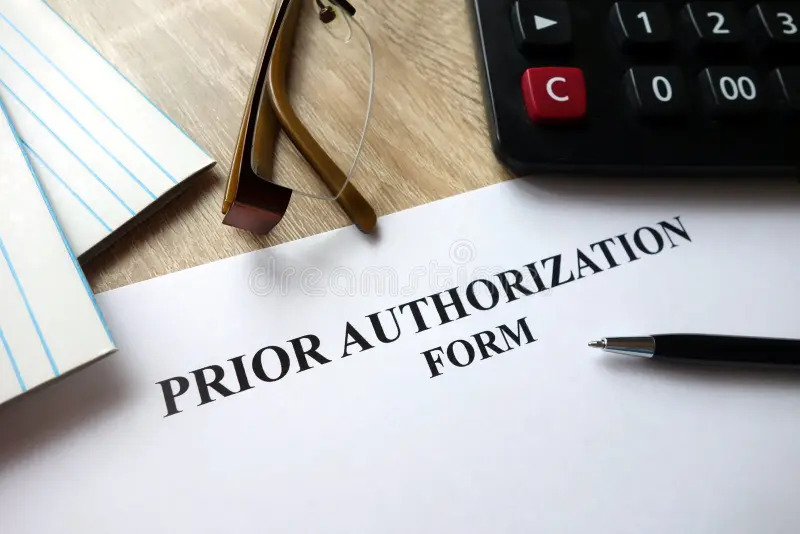Prior authorization can be best defined as a utility management process that enables insurance companies to justify the medical necessity and cost-efficiency of services, procedures and diagnoses recommended by you. PA ensures that you always prescribe a cost-effective substitute for a high-cost treatment plan. It is always an Important for you to obtain prior authorization approval before prescribing any specific course of treatment to your patients.
Unfortunately, obtaining prior authorization is not as easy as it seems. Managing prior authorization comes with a substantial administrative burden and practices often find pre-authorization solutions to be a costly proposition. Additionally, most insurance companies have their respective set of complex rules and regulations, thus making it a more overwhelming affair for your in-house pre-authorization experts. Adding to the challenge, payers always add new treatments and services to their list every year.
The major burdens of prior authorization highlighted by AMA survey:
Insurers use prior authorization (PA) to decide if a service is necessary before you get it. But according to a 2022 survey, many doctors find this process frustrating and harmful to patients. About 88% of doctors said dealing with PA is very stressful. To manage the workload, 35% of them assign staff to handle PA tasks. Over 80% of doctors said PA causes delays, affecting patient care and sometimes even leading patients to skip their treatment.
Fortunately, you still can implement a perfect prior authorization services with the proven strategies mentioned below.
Strategies to improve your prior authorization services:
1) Know each insurance company’s coverage and preauthorization rules:
Every insurer has its own form for prior authorization that you need to complete when prescribing certain medications or treatments. You might have to handle many different forms, each with its own requirements. Take the time to understand and fill out these forms accurately.
2) Accurate coding is the key to PA success:
Ensure accurate coding: Always use the right diagnosis codes to show why the procedure is needed. This helps in getting reimbursed and during any payment discussions. You should also use the correct CPT codes for all treatment options. For example, if an orthopedist is deciding between viscosupplementation or corticosteroid injections for shoulder pain, submit CPT codes for both options to make sure you get paid for whichever one is used.
3) Submission of accurate information:
Submit accurate information: Prior authorizations often get delayed because of incomplete or incorrect details. When scheduling a patient, always check their eligibility and whether a prior authorization is needed. Make sure to include all required information, like the patient’s insurance ID number, name, date of birth, procedure type, and both the facility’s and the ordering doctor’s tax ID or NPI numbers. Small errors, like a wrong number or missing address, can lead to denials and extra work for your office.
4) Know your payer’s criteria in terms of medical necessity:
Payers will only cover services that meet their own rules for medical necessity. To get reimbursed, you need to understand what each payer considers necessary. For example, Medicare Advantage Contractors look at these criteria:
- The service is safe and effective.\
- It is not experimental.
- It follows accepted medical standards.
- It’s provided in the right setting for the patient’s needs.
- It’s given by qualified professionals.
- It meets the patient’s medical needs.
Along with the patient’s diagnosis and planned procedure, include details on how serious the diagnosis is, the risks of not doing the procedure, and any previous tests or treatments tried. Make sure to fill in any gaps to avoid extra medical record reviews, denials, and overpayment requests.
Always adhere to the recommended treatment guidelines:
Follow the recommended treatment guidelines for expensive procedures. Insurers often review treatments after they’re done to check if they were appropriate, effective, and timely. If you don’t use approved treatments and a claim is denied, you’ll end up covering the costs.
You might have already realized the fact that managing prior authorization services is not a cup of team for everyone as it requires dedicated effort and time. To avoid all the hassles of the complex PA process, most medical practices prefer to outsource prior authorization services to a third-party pre-authorization company. Pre-authorization experts in professional companies know how to implement the best in class pre-authorization solutions for your practice so that you can completely focus on patient care.
If you are also planning to hire one of the best prior authorization companies, look no other than Sunknowledge as this company has already streamlined the perfect PA and billing services for hundreds of medical practices across the world.
To get more details about Sunknowledge’s services, contact one of the experts today.





Comments